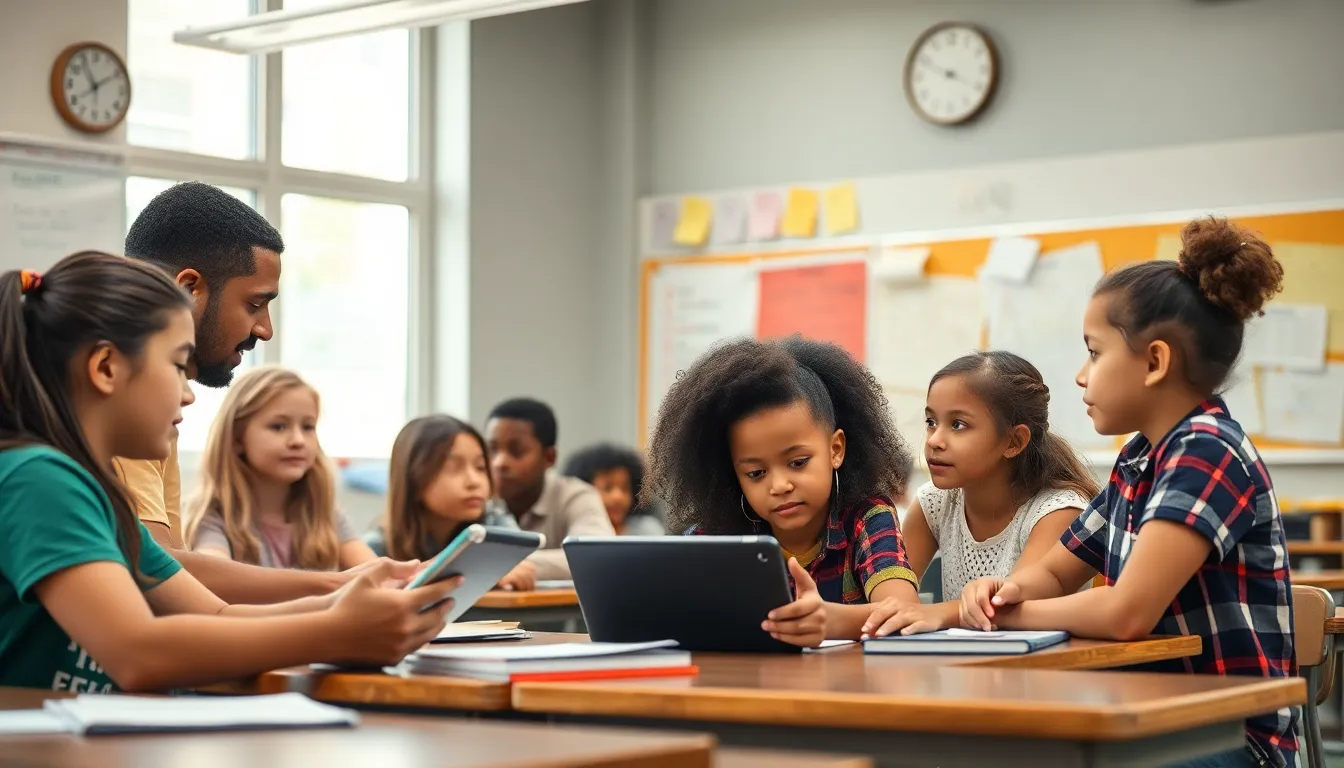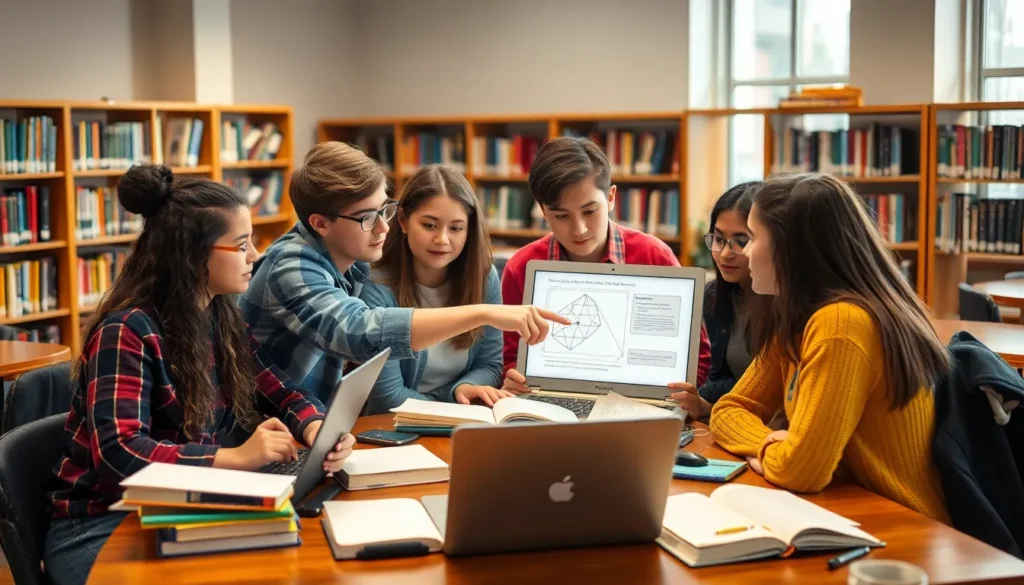Table of Contents
ToggleSchool performance isn’t just about grades; it’s a rollercoaster ride through the thrilling ups and downs of academic life. Picture this: a student juggling homework, extracurriculars, and the occasional existential crisis over whether to join the chess club or the debate team. It’s a wild world where every test can feel like a high-stakes game show, and the pressure is real.
Overview of School Performance
School performance includes various factors beyond academic grades. Assessments like standardized tests measure knowledge but often overlook students’ emotional and social challenges. Emotional well-being significantly impacts a student’s ability to learn effectively. Many face pressure from family expectations or peer competition, directly influencing performance outcomes.
Extracurricular activities provide critical development opportunities. Involvement in clubs or sports teaches teamwork and time management skills. These experiences foster a sense of belonging, which can enhance academic success. They also contribute to overall student happiness, directly linked to performance.
Data shows a correlation between school resources and performance. Schools with higher funding often provide better facilities and programs. Access to counseling services and academic support can greatly enhance students’ coping strategies and academic achievement.
Research highlights that engagement in the learning process affects outcomes. Active participation leads to higher retention of knowledge. Students who engage in discussions or collaborative projects demonstrate improved performance.
Parental involvement plays a vital role as well. Supportive parents can motivate students and create a conducive home environment for study. Parents who engage in their child’s education often see better school performance.
Lastly, teachers’ expectations and teaching methods are crucial. Educators who implement diverse instructional strategies address various learning styles. This adaptability helps to meet the unique needs of each student, fostering a more inclusive learning atmosphere.
Factors Influencing School Performance

Multiple factors contribute to school performance, shaping the academic landscape for students. Understanding these factors reveals the complexity behind educational success.
Socioeconomic Status
Socioeconomic status significantly affects school performance. Students from low-income families often encounter barriers such as limited access to educational resources. Research consistently shows that financial constraints can hinder academic achievement. Educational disparities arise when schools in wealthier areas receive more funding, leading to better facilities and support services. Students in lower socioeconomic brackets may experience stressors unrelated to school, impacting their focus and motivation to learn.
Parental Involvement
Parental involvement serves as a critical component of student success. Supportive parents actively engage in their children’s education by helping with homework or attending school events. These actions create a conducive home environment for learning. Studies indicate that children with involved parents exhibit higher levels of motivation and academic achievement. Furthermore, parents who communicate high expectations encourage their children to strive for excellence. This involvement fosters a sense of responsibility and support, promoting overall well-being.
Educational Resources
Educational resources play a vital role in shaping student outcomes. Schools equipped with adequate materials, technology, and trained staff often facilitate better learning experiences. Access to modern resources allows students to engage deeply with the curriculum. Data shows that higher funding correlates with improved test scores and graduation rates. Resources also include extracurricular programs that enhance personal development, teaching vital skills such as teamwork and leadership. When schools prioritize resource allocation, students benefit from a more enriched educational experience.
Measurement of School Performance
Measuring school performance involves various methods, reflecting the complexity of academic success.
Standardized Testing
Standardized tests serve as a common tool for assessing student performance across different schools. These assessments provide data that helps compare educational outcomes and identify areas needing improvement. Score trends reveal insights into overall school effectiveness while aligning curriculum standards. Despite their value, critics argue that such tests may not capture the full range of a student’s capabilities or learning experiences. Schools often use these results alongside other metrics to gain a comprehensive understanding of student progress. Continuous evaluation of testing methods ensures these tools remain relevant to evolving educational needs.
Academic Achievements
Academic achievements include a range of metrics beyond grades, showcasing students’ skills and knowledge. Performance indicators, such as graduation rates, GPA, and honors awards, offer valuable insights into a school’s effectiveness. Achievements in extracurricular activities also reflect student engagement and personal development. Recognition in areas like science fairs, art shows, and sports competitions contributes to the overall evaluation of school performance. Tracking these accomplishments enables schools to celebrate diverse talents and enhance students’ learning experiences. Sharing this data fosters an environment of encouragement, motivating students to excel academically and socially.
Strategies for Improvement
Improving school performance requires strategic interventions that focus on both teacher and student development.
Teacher Training and Support
Quality teacher training significantly impacts educational outcomes. Support for educators enhances their effectiveness, allowing them to meet diverse student needs. Professional development opportunities equip teachers with up-to-date instructional strategies. Feedback mechanisms foster growth, helping educators refine their approaches. Collaboration among teachers promotes sharing best practices, creating a supportive network. With ongoing training, teachers adapt to various learning styles, leading to improved student engagement. Comprehensive support systems within schools empower teachers to address challenges and boost morale, ultimately enhancing the learning environment.
Student Engagement Techniques
Engaging students in their learning process is crucial for performance improvement. Active learning strategies encourage participation, making lessons more interactive. Incorporating technology into lessons captures students’ interest and fosters collaboration. Group projects allow students to develop teamwork skills and learn from peers. Real-world applications of knowledge demonstrate relevance, motivating students to invest in their education. Regular feedback on assignments helps students understand their progress and areas for improvement. Ultimately, cultivating a classroom atmosphere that values student input fosters a sense of belonging, enhancing both academic and social development.
School performance is a multifaceted issue that extends beyond mere grades. It involves emotional well-being parental support and the quality of educational resources. By recognizing the various elements that contribute to a student’s academic journey schools can create a more inclusive and supportive environment.
Engaging students through active learning techniques and fostering strong relationships with parents can significantly enhance performance. Ultimately it’s about cultivating a holistic approach that values both academic achievements and personal growth. As educational systems evolve they must prioritize these aspects to empower students to reach their full potential.




